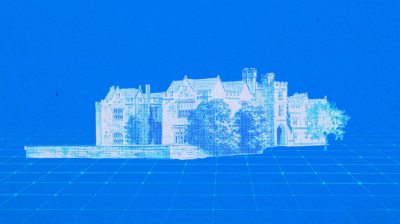Ibrahim El-Attar: Architectural Visionary Blending Tradition with Modernity
Ibrahim El-Attar is a prominent figure in the field of modern architecture, celebrated for his innovative designs that seamlessly blend traditional aesthetics with contemporary functionality. Born on March 15, 1978, in Cairo, Egypt, El-Attar demonstrated a penchant for creativity and design from an early age. His upbringing in a culturally rich environment, coupled with his fascination for the architectural wonders of ancient Egypt, laid the foundation for his illustrious career in the realm of architecture.
Ibrahim El-Attar
El-Attar's educational journey commenced at the renowned Faculty of Fine Arts, Cairo University, where he pursued a degree in Architecture. During his formative years, he immersed himself in diverse architectural styles, drawing inspiration from the timeless marvels of Egyptian, Islamic, and modernist architecture. This eclectic amalgamation of influences would later become a defining characteristic of his design philosophy.
After graduating with top honors, El-Attar embarked on a journey of exploration, traversing the globe to study various architectural marvels and gain invaluable insights into different cultural perspectives on design and space. His travels took him to Europe, Asia, and the Americas, where he absorbed the nuances of architectural masterpieces and interacted with esteemed architects from around the world.
Armed with a wealth of knowledge and a burning passion for innovation, El-Attar established his architectural firm, "El-Attar Architects," in 2005, with the mission of redefining the architectural landscape through visionary design solutions. His debut projects garnered widespread acclaim for their striking blend of tradition and modernity, earning him a reputation as a trailblazer in the industry.
One of El-Attar's most notable achievements is the "Nile Tower," an iconic skyscraper that graces the Cairo skyline. Inspired by the majestic flow of the Nile River, the tower's fluid curves and glass façade pay homage to Egypt's rich cultural heritage while symbolizing the nation's aspirations for progress and prosperity.
In addition to his architectural endeavors, El-Attar is a fervent advocate for sustainable design practices and environmental conservation. He believes that architects have a responsibility to create spaces that not only cater to the needs of the present but also preserve the planet for future generations. As such, many of his projects integrate green technologies and eco-friendly materials, setting new standards for sustainable architecture in the region.
Beyond his professional achievements, El-Attar is admired for his philanthropic efforts aimed at improving the lives of underprivileged communities through architecture. He has spearheaded numerous initiatives to design affordable housing solutions, schools, and community centers, empowering marginalized populations and fostering social inclusion.
Ibrahim El-Attar's unwavering commitment to excellence, coupled with his visionary approach to architecture, has earned him international recognition and accolades. His work continues to inspire aspiring architects and shape the built environment, leaving an indelible mark on the world of architecture for generations to come.
In conclusion, Ibrahim El-Attar stands as a visionary architect whose innovative designs seamlessly merge tradition with modernity, leaving an indelible mark on the architectural landscape. His journey from Cairo University to the establishment of his architectural firm reflects a relentless pursuit of excellence and a commitment to pushing the boundaries of creativity. Through iconic projects like the Nile Tower and his advocacy for sustainability and social responsibility, El-Attar has not only shaped skylines but also enriched communities and inspired future generations of architects. His legacy serves as a testament to the transformative power of architecture in creating a more sustainable, inclusive, and beautiful world.
As of my last update in January 2022, there is no specific information available regarding Ibrahim El-Attar being mentioned in books, films, series, or websites. However, it's possible that he may be referenced in architectural publications, documentaries, or online articles discussing notable architects and their contributions to the field. For the most accurate and up-to-date information, it's recommended to conduct a targeted search on architectural databases, academic journals, or news outlets.






